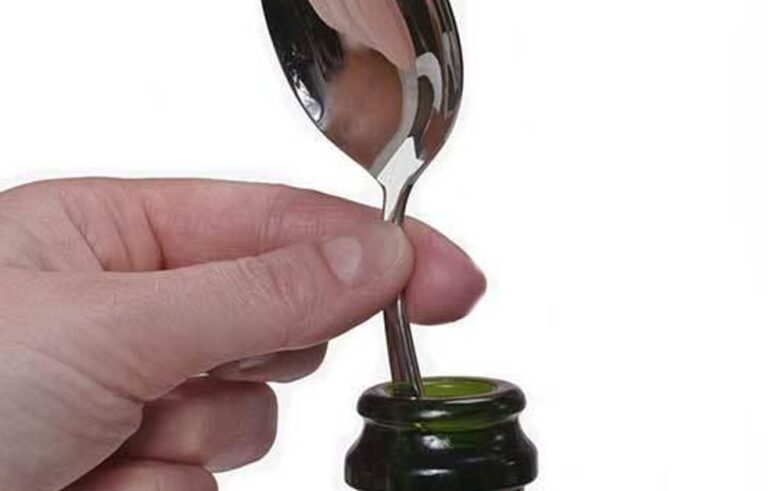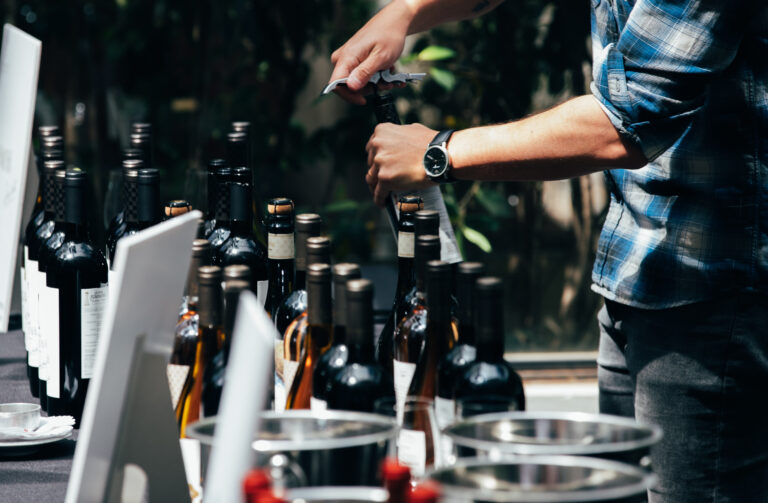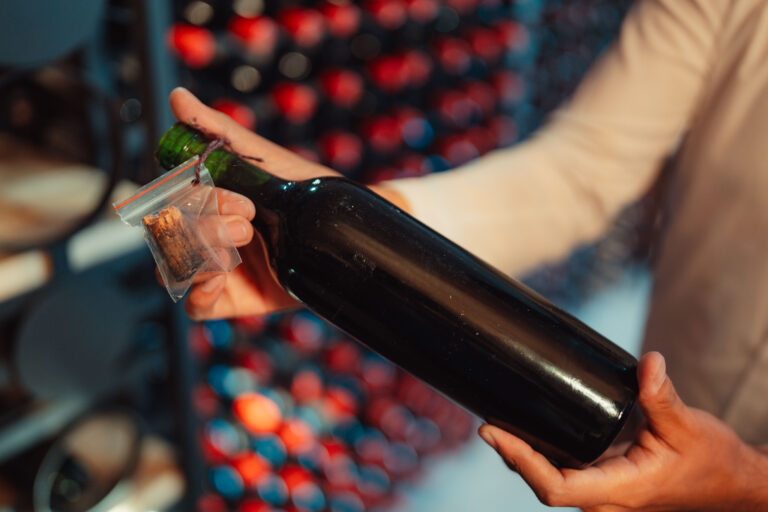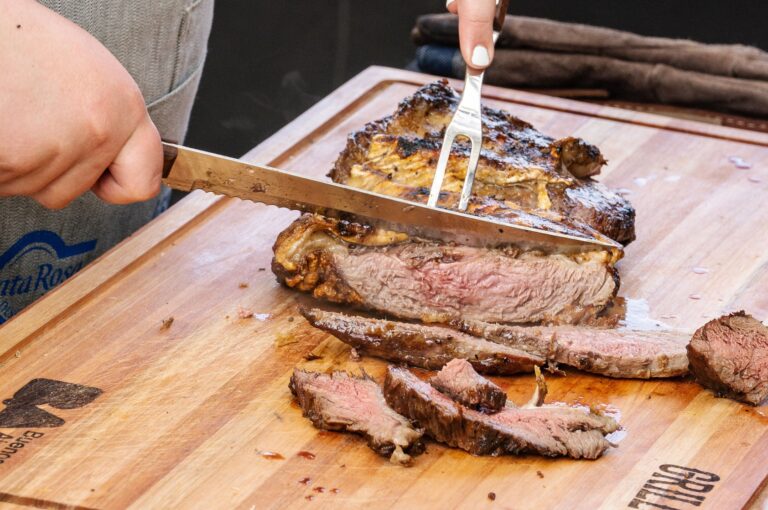Some of these stories are charming remnants of tradition; others are clever marketing tales that have taken root in the collective imagination. But behind the swirl of ritual and romance, facts often get lost in the bouquet. In this piece, we uncork five enduring myths that shape how we choose, serve, and savor wine—and reveal the truths that can help us enjoy it even more.

Putting a Spoon in a Champagne Bottle Keeps the Fizz In
Popular wisdom attributes this power to various characteristics of spoons. Some claim that the concave side of the spoon creates a “wave effect” that repels the gas rising through the neck of the bottle, sending it back inside. Others point to the metal’s ability to conduct temperature: by inserting a metal spoon into the neck, the area cools down, supposedly preventing the escape of carbon dioxide.
There are even those who insist that only silver spoons have the power to retain the gas inside the bottle. This precious metal, according to folklore, isn’t just useful for crafting projectiles capable of killing werewolves—it’s also effective for this more everyday purpose. But is there any truth to these theories?
In 1995, researchers from the Champagne Wine Interprofessional Committee (France) conducted an experiment to determine which method truly prevents gas from escaping an opened bottle of sparkling wine. They opened several bottles of Champagne and left them in the fridge for 26 hours using different closures.
Some bottles had a silver spoon placed in the neck; others had various metal objects inserted as spoons; a third group was sealed with a cork; a fourth with an airtight stopper specifically designed for sparkling wines; and finally, a control group was left in the fridge without any closure.
The results were conclusive: only the airtight stopper prevented the Champagne from losing its fizz. There were no significant differences between the other methods and leaving the bottle completely open. The explanation is simple: carbon dioxide is a gas, and it will escape unless something airtight blocks its path.
To clarify, the spoon doesn’t have that property. What does help—when combined with an airtight seal—is the cold temperature of the fridge, which slows down the loss of dissolved CO₂ in the beverage.🥂

Heavy Bottle, High-Quality Wine
“This must be a great wine!”—it’s the automatic thought that often arises when the average consumer encounters a noticeably heavy wine bottle. A perception rooted in outdated marketing strategies, and one that’s not particularly eco-friendly.
The truth is, there’s no direct correlation between the weight of a bottle and the quality of the wine inside. The issue is that many wineries still follow the inertia of bottling their finest wines in larger, heavier formats.
“If we switch to lighter bottles, people will think we’re lowering the quality,” is the common argument from marketing departments reluctant to lighten their packaging. Worse still, some producers disguise mediocre wines in unusually heavy bottles, banking on the psychological effect of “big is better” in the consumer’s mind.
So, what does a heavy bottle really tell us? At best, nothing. At worst, something troubling. It reflects the industry’s struggle to respond to the urgent need to reduce its carbon footprint. In some countries, heavy bottles are even penalized—Canada, for instance, bans bottles with glass weighing more than 450 grams.
The environmental impact of reducing glass weight is striking. One bottle manufacturer calculated that by lowering the weight of its lightest format by 8%, it prevented seven tons of CO₂ emissions for every million units produced.
While Argentina does have 340-gram glass bottles, most average between 500 and 600 grams. Meanwhile, bottles exceeding 800 grams remain standard, and it’s not uncommon to find one weighing a full kilo.
Ultimately, lightening the bottle is a return to the roots. It’s a reversal of the relatively recent trend of assigning prestige to something that doesn’t deserve it. After all, a bottle of Château Lafite-Rothschild weighs just 540 grams. As a Premier Grand Cru Classé from Bordeaux, it has never relied on anything but the wine itself to stand out.🍷

Wines with Screw Caps Are Low Quality
Among the many myths surrounding wine, one that lacks any technical justification is the claim that wines sealed with screw caps are of inferior quality. Or, in other words, that the screw cap is a sign of a “cheap” wine.
On the contrary, the screw cap is not, to begin with, an indicator of quality. This type of closure is used across a range of products at different price points. In fact, it proves to be the most beneficial method for certain kinds of wines.
White, rosé, and red wines intended for early consumption—those whose primary appeal lies in their fresh varietal aromas—pair very well with screw caps. Why? Because screw caps form a tight seal that minimizes the entry of air into the bottle, reducing any potential evolution (specifically oxidation) caused by exposure to oxygen. This helps preserve the vibrant, fruity character of young wines.
That’s why many high-end (and ultra-premium) wines are now bottled with this type of closure, which also carries other notable advantages. One such benefit is the complete elimination of the risk of contamination from the dreaded TCA.
Trichloroanisole, as it’s formally known, is a molecule that can be present in cork and imparts unpleasant aromas reminiscent of wet cardboard—commonly referred to as “cork taint.” While there are treatments available to prevent such contamination, not all corks undergo this process. Screw caps, by contrast, are made from materials that are unaffected by TCA.
Another practical advantage of the screw cap is its secure seal. Once opened, the bottle can be stored horizontally in the refrigerator without fear of leaking—a common issue with cork-sealed bottles.
And finally, one of the screw cap’s greatest benefits is its user-friendliness: wines sealed this way require no tools to open, giving your corkscrew a well-deserved break. 🍷

All Wines Improve With Age
It’s true that wine is one of the few beverages capable of improving over time. However, not all wines evolve in the bottle—most are intentionally crafted to shine in their youth, typically within two or three years of harvest.
So, how can you tell if a wine has aging potential? Let’s start with those that don’t. This includes rosé wines and sparkling wines made using the Charmat method. Both should be consumed as close to their release date as possible, as they are designed to highlight the freshness of fruit, along with their vibrant aromas and flavors.
A wine’s aging potential depends on several factors. The first is the health of the grapes used to make it—something that can’t be determined just by looking at the bottle. Over time, with experience, you begin to recognize labels that tend to age well thanks to the quality of their raw material, regardless of other influencing elements.
Alcohol acts as a preservative: the higher a beverage’s alcohol content, the greater its protection over time. This is especially evident in spirits. In wine, alcohol contributes to preservation, but it alone isn’t sufficient to ensure proper bottle aging.
One of the main pillars of age-worthy wine is acidity. Good natural acidity supports a wine’s evolution in bottle, triggering chemical changes in compounds like anthocyanins (which provide color) and polyphenols. Acidity—the mouthwatering sensation as wine hits the palate—is key across all styles, especially whites.
Red wines, meanwhile, benefit from tannins: components that add structure and support long-term aging. Tannins are found in grape skins, but they can also be introduced through barrel aging. However, excessive aging in oak can be counterproductive. Wines that have been overly exposed to wood often mask the fruit’s presence, leading to premature decline.
What truly evolves in a wine is its fruit character, where primary or secondary aromas transform into tertiary ones. If a wine has “lost” its fruit, there is little left to develop in the bottle. It’s in the balance between acidity, the richness of fruity aromas, and a solid tannin structure where a wine’s future is defined.🍇

Red Meat Only Pairs Well With Red Wine
Asado and Malbec: an unbeatable duo. Our flagship grape seems tailor-made for the food that defines us. Yet, many wines can elevate an asado—not just reds.
The pairing rule that assigns red wines to red meats has its logic. The fat and protein in meat interact well with the tannins present in reds, softening their astringency and making them smoother. Tannins, in turn, work their magic by countering the richness of the meat and helping cleanse the palate. The result? Rough edges are smoothed, textures enhanced, and flavors amplified.
This rule works well for Malbec, a grape with a moderate level of tannins—often boosted by barrel aging that adds extra tannic structure. But it also applies to other varietals known for their tannic character.
There’s the king of reds, Cabernet Sauvignon, along with Syrah, the increasingly popular Cabernet Franc, and blends that include Petit Verdot or Tannat—grapes known for high tannins that become more approachable when blended.
We began with pairing rules, but they can—and should—be broken with intention. Personal taste ultimately guides true wine enjoyment.
Many white wines work wonderfully with asado. In fact, the moment of serving offals is perfect for whites, as long as they feature high acidity. Spotting one is easy: if a wine makes you salivate on the first sip, you’ve got a good candidate.
Options range from a Torrontés from Cafayate to a Semillón from Luján de Cuyo. A white wine with bright acidity helps cleanse the palate when eating fatty offals like sweetbreads or chitterlings. A similar effect can be achieved with sparkling wine—especially lighter ones made using the Charmat method.
And the realm of whites doesn’t end with offals. Some white wines behave like reds, and it’s true. This applies to wines with high acidity balanced by substantial mouthfeel, like barrel-aged Chardonnay or those aged on lees. Refreshing yet full-bodied whites that confidently hold their own against a juicy flank steak or a perfectly cooked ribeye. 🍷


